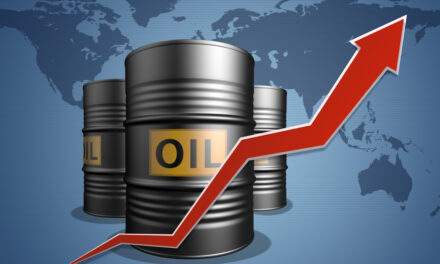Last week was another typical 2022 bear market week.Major stock market indexes were down. Almost all stocks within those indexes were down. So was almost every sector.But there was one lone winner that outshined everything else…That was the energy sector, and it’s a pattern we’ve seen again and again. Energy stocks are this year’s biggest winners.That leaves many long-term investors scared to buy energy … because they’ve been taught to love buying stocks that are going down.They smugly quote the Oracle of Omaha, saying: “I buy my socks and my stocks when they’re on sale.”I get it. It can feel good to buy stocks that are falling. They appear “cheap.” By continually plugging money into them as they fall, you lower your cost basis so it’ll take less of a rally to break even.Unfortunately, the data clearly shows that buying stocks that are going down is a fool’s errand.Doing so will just dig a deeper and deeper hole in your portfolio … and, if you’re not careful, blow up your whole account.Today, I’m going to make the case for doing the opposite. You shouldn’t buy stocks that are going down. In fact, you should do the opposite and only buy the stocks that are going up.Right now, what’s going up is energy. And if you want to not just beat the market next year, but close out 2023 in the green, you’ll listen closely to what I’m about to say…
Buy Nothing But These Stocks
In the past 100 years, about 26,000 stocks have traded on a U.S. exchange. One study from Hendrik Bessembinder found the average stock survives just seven years before it’s delisted.You might think that’s to be expected, since competitors acquire each other all the time.But buyouts aren’t the reason most stocks stop trading. A majority of the time, stocks stop trading because they fall to zero.That can happen when a company fails to meet the exchange’s listing requirements. Or because the company goes bankrupt.Of those 26,000 stocks, the most common return over the stock’s lifespan was … 0%. That means many investors who thought they were buying bargains on the way down eventually lost 100% of their investment. This happened to a staggering 42% of stocks in the past 100 years.That same study also found that all of the market’s total return came from less than 5% of the stocks. This gives you a 1 in 20 chance in finding a long-term winner.So, how do you know which stocks are these “less than 5%?”It’s simple. They’re the ones going up, not down.
‘22 Winners Will Keep Winning
Data also shows that buying last year’s biggest winners is a formula for consistently beating the market. This is known as “the momentum anomaly to the efficient market hypothesis.”(That’s a lot of big words academics use that translate to “this is a consistent truth that doesn’t agree with a more popular and comfortable falsehood.” Traders like me just call it relative strength investing.)Dozens of studies going back to 1933 show that relative strength strategies deliver market-beating results. Yet, many investors avoid this strategy because, again, they’ve been trained to find comfort in buying stocks that are going down.The long-term chart of Exxon Mobil Corp. (XOM) proves that buying strength can be rewarding. Take a look…

(Click here to view larger image.)
Buying XOM after it makes a new all-time high has led to significant gains for the past 40 years. It worked in the ‘80s, the ‘90s and the aughts.It didn’t work as well during the 2010’s oil fracking boom, which caused a glut in oil supply. But as we can see, XOM just notched a new high. And now, the tailwinds for oil prices support continued strength.That simple rule, buying stocks that are making new highs, helps you avoid buying stocks that are in downtrends or moving sideways. All of these trends — up, down and sideways — last for years at a time.At the end of 2022, XOM is one of the year’s best performers. It also just made a new high a few months ago.History tells us that it’s likely to be starting a multiyear uptrend. Other stocks in the sector show similar patterns.
Time to Get Uncomfortable
I understand that this is an uncomfortable trade…It’s easier to buy a beaten-down tech stock and argue they have to come back.Or you might be more comfortable buying a value stock in the consumer staples sector that has limited growth potential but offers a 3% dividend yield.But comfortable trades don’t beat the market.I’m not alone in my belief that energy will be a big winner in the next few years. Adam O’Dell reached the same conclusion after a detailed study.He’s unveiling the results of that study on Wednesday, December 28, and you can sign up for that presentation here.Regards, Michael CarrEditor, One TradeP.S. Yesterday, Adam just launched a brand-new website that contains all his latest research about oil stocks and the macro factors that are powering a new multiyear energy bull market.Go to OilSuperBull.com now to check it out, and prepare for next week’s event.
Michael CarrEditor, One TradeP.S. Yesterday, Adam just launched a brand-new website that contains all his latest research about oil stocks and the macro factors that are powering a new multiyear energy bull market.Go to OilSuperBull.com now to check it out, and prepare for next week’s event.
|
|||
|












